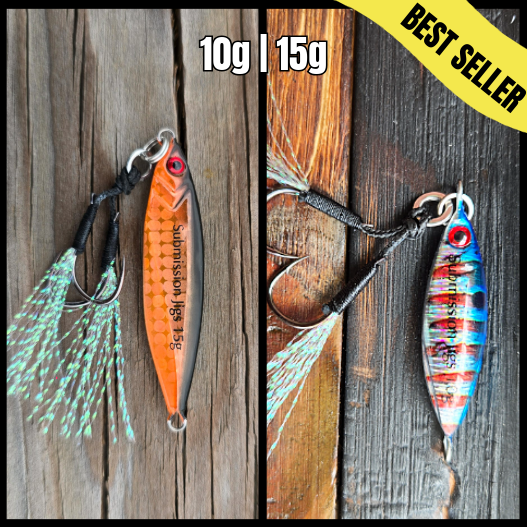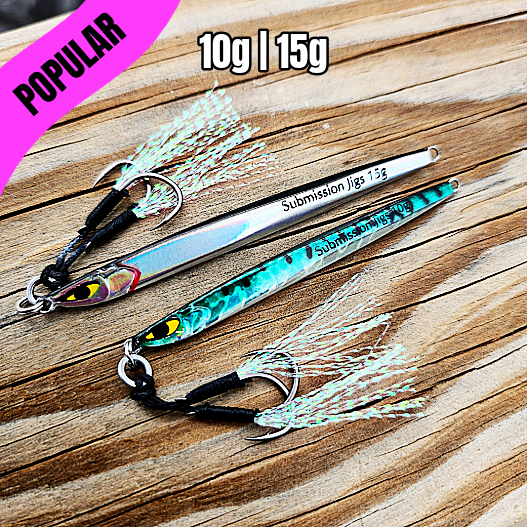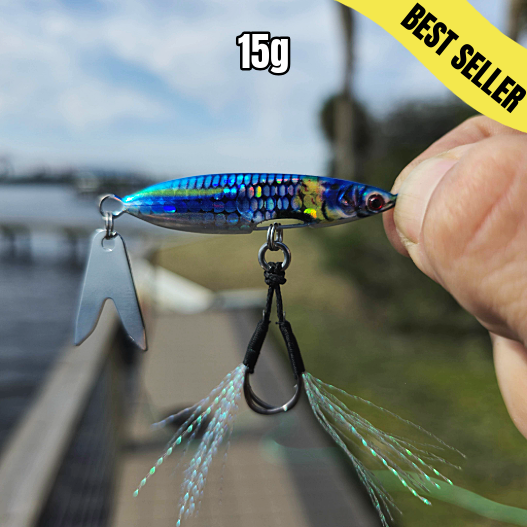Master Slow Pitch Jigging: The Ultimate Beginner’s Guide for Offshore & Freshwater Warriors
Master Slow Pitch Jigging: The Ultimate Beginner’s Guide for Offshore & Freshwater Warriors
So, you’ve heard the whispers on the dock or the excited talk on the boat: slow pitch jigging. This isn’t your grandpa’s lead sinker or a chunk of frozen squid on a rusty hook—this is active fishing for those who want to create the bite, not sit around waiting for it.
What Is Slow Pitch Jigging?
Slow pitch jigging is a technique developed in Japan that’s gone global for one reason: it catches fish when other methods fail. Instead of yanking your rod like you’re trying to start a lawnmower, slow pitch jigging uses short, precise lifts of the rod, allowing the jig to flutter like a dying baitfish. The magic happens on the fall: predators see an easy meal and smash it.
How Does a Slow Pitch Jig Work?
Unlike traditional knife jigs that sink straight down like a stone, slow pitch jigs—like our Submission Fishing Micro Sumo and Mercenary, Javelin, and Ogre—are center-weighted, asymmetrical weapons of fish destruction. These jigs glide, flutter, and flash on the descent, mimicking wounded prey. Our jigs’ unique shapes, bright UV and glow finishes, and durable through-wire construction ensure they don’t just look pretty—they keep performing drop after drop.
Other Types of Jigs (and Why They’re Different):
-
Speed Jigs: Designed for rapid lifts to target fast-moving fish like tuna, they dart up but lack the tantalizing flutter of slow pitch jigs.
-
Butterfly Jigs: Similar in action but with less emphasis on the controlled, rhythmic pitch-and-fall of slow pitch.
-
Bucktail Jigs: Great for shallow waters, but they don’t provide the erratic fall needed for deep or offshore slow pitch.
When it comes to slow pitch, you want the right tool for the job—a Submission Jig that gives you life-like action fish can’t resist.
Essential Gear for Slow Pitch Jigging Success
Ready to level up? Here’s your shopping list:
🎣 Rods: A dedicated slow pitch rod is key. These rods are shorter (usually 6’3”–6’8”), with a soft, parabolic bend to load the jig and spring it back into action. Don’t use your standard boat rod—slow pitch rods are designed for precision.
🎣 Reels: Conventional, high-quality reels with smooth drag are ideal—think compact, narrow-spool models like Shimano Ocea Jigger, Daiwa Saltiga, or accurate two-speeds. A 5:1 gear ratio is the sweet spot for controlled cadence.
🎣 Line: Go with PE-rated braid (thin diameter, low stretch) to keep your presentation vertical even in current. PE 1.5–3.0 is standard, but scale up or down depending on target species and jig weight.
🎣 Leaders: Fluorocarbon leaders in the 30–80 lb range give stealth and abrasion resistance. Length can vary but 6–10 feet is a good starting point.
🎣 Assist Hooks & Rings: Always rig with high-quality assist hooks like our Submission BKK kits. Add solid rings and heavy-duty split rings rated to your mainline strength. Weak hardware costs fish—don’t skimp here.
🎣 Knots: The PR Bobbin Knot or FG Knot is best for braid-to-fluoro connections—thin, strong, and passes smoothly through guides. For terminal connections, perfection loops or uni-knots work well.
Technique: Master the Cadence
Slow pitch jigging isn’t speed jigging. Quarter- to half-turns of the reel handle are the name of the game. Lift, let the rod tip load, and let the jig flutter back down on slack line. Most strikes come on the fall, so stay alert. Don’t point your rod skyward—keep it low, at or below horizontal, for crisp, rhythmic pitches.
Why Choose Submission Jigs?
Our Samurai, Javelin, and Ogre models are designed for warriors of the water—anglers who want more than just a day on the boat. We build every jig with center-balanced cores, glow and UV paint that lasts, and heavy-duty through-wire to survive the meanest fish. Fish-tested, angler-approved.
Want More Tips Like This?
Sign up for our email list and get:
- 🎁 15% off your first order
- 🚀 Early access to new product drops
- 🎥 How-to videos with Mike Muto
Ready to become a master?
Explore our premium Submission Fishing slow pitch jigs and gear guides to find what you need to create your own bite—and never leave the water empty-handed again.





